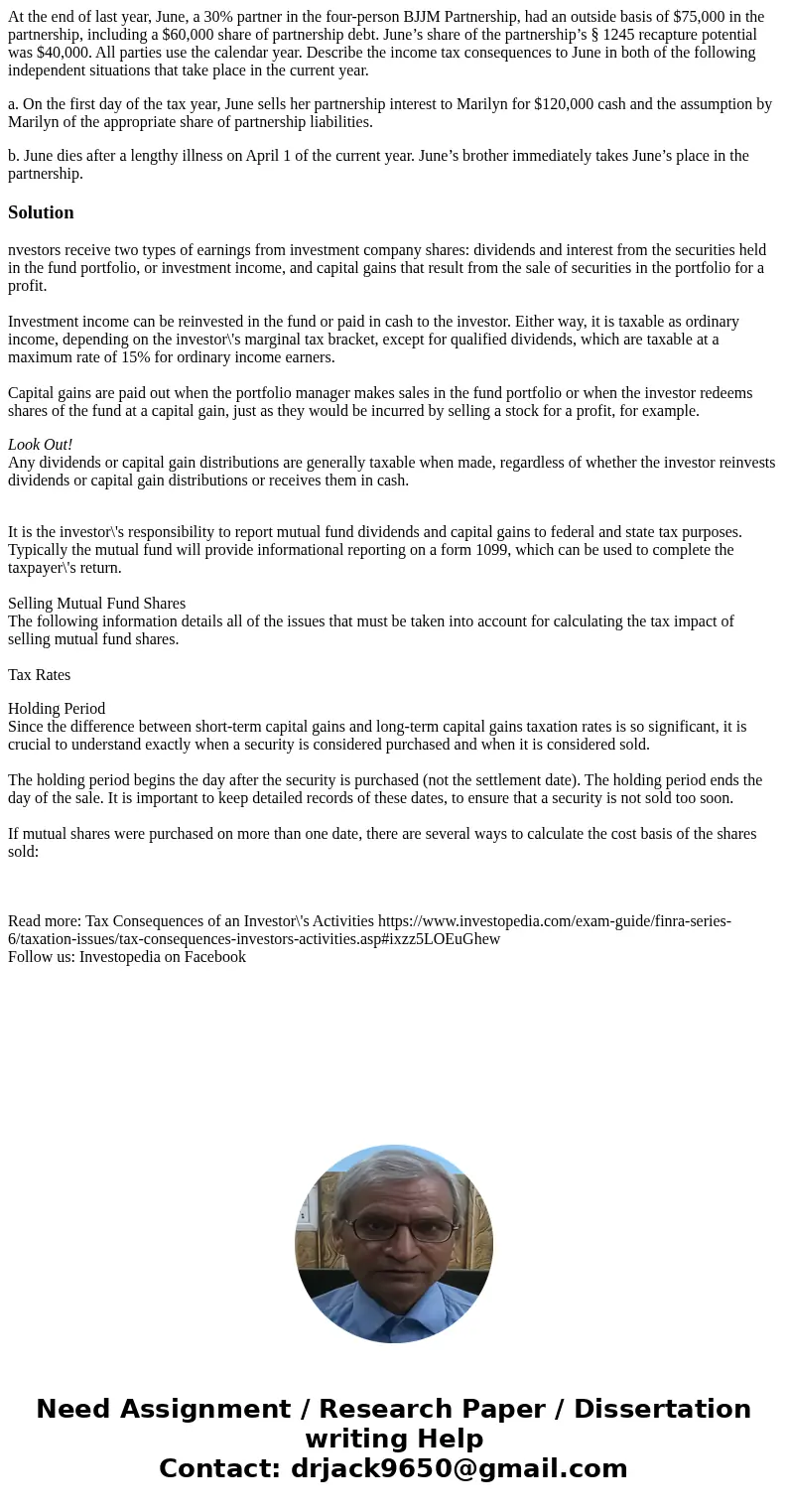At the end of last year June a 30 partner in the fourperson
At the end of last year, June, a 30% partner in the four-person BJJM Partnership, had an outside basis of $75,000 in the partnership, including a $60,000 share of partnership debt. June’s share of the partnership’s § 1245 recapture potential was $40,000. All parties use the calendar year. Describe the income tax consequences to June in both of the following independent situations that take place in the current year.
a. On the first day of the tax year, June sells her partnership interest to Marilyn for $120,000 cash and the assumption by Marilyn of the appropriate share of partnership liabilities.
b. June dies after a lengthy illness on April 1 of the current year. June’s brother immediately takes June’s place in the partnership.
Solution
nvestors receive two types of earnings from investment company shares: dividends and interest from the securities held in the fund portfolio, or investment income, and capital gains that result from the sale of securities in the portfolio for a profit.
Investment income can be reinvested in the fund or paid in cash to the investor. Either way, it is taxable as ordinary income, depending on the investor\'s marginal tax bracket, except for qualified dividends, which are taxable at a maximum rate of 15% for ordinary income earners.
Capital gains are paid out when the portfolio manager makes sales in the fund portfolio or when the investor redeems shares of the fund at a capital gain, just as they would be incurred by selling a stock for a profit, for example.
Look Out!
Any dividends or capital gain distributions are generally taxable when made, regardless of whether the investor reinvests dividends or capital gain distributions or receives them in cash.
It is the investor\'s responsibility to report mutual fund dividends and capital gains to federal and state tax purposes. Typically the mutual fund will provide informational reporting on a form 1099, which can be used to complete the taxpayer\'s return.
Selling Mutual Fund Shares
The following information details all of the issues that must be taken into account for calculating the tax impact of selling mutual fund shares.
Tax Rates
Holding Period
Since the difference between short-term capital gains and long-term capital gains taxation rates is so significant, it is crucial to understand exactly when a security is considered purchased and when it is considered sold.
The holding period begins the day after the security is purchased (not the settlement date). The holding period ends the day of the sale. It is important to keep detailed records of these dates, to ensure that a security is not sold too soon.
If mutual shares were purchased on more than one date, there are several ways to calculate the cost basis of the shares sold:
Read more: Tax Consequences of an Investor\'s Activities https://www.investopedia.com/exam-guide/finra-series-6/taxation-issues/tax-consequences-investors-activities.asp#ixzz5LOEuGhew
Follow us: Investopedia on Facebook

 Homework Sourse
Homework Sourse